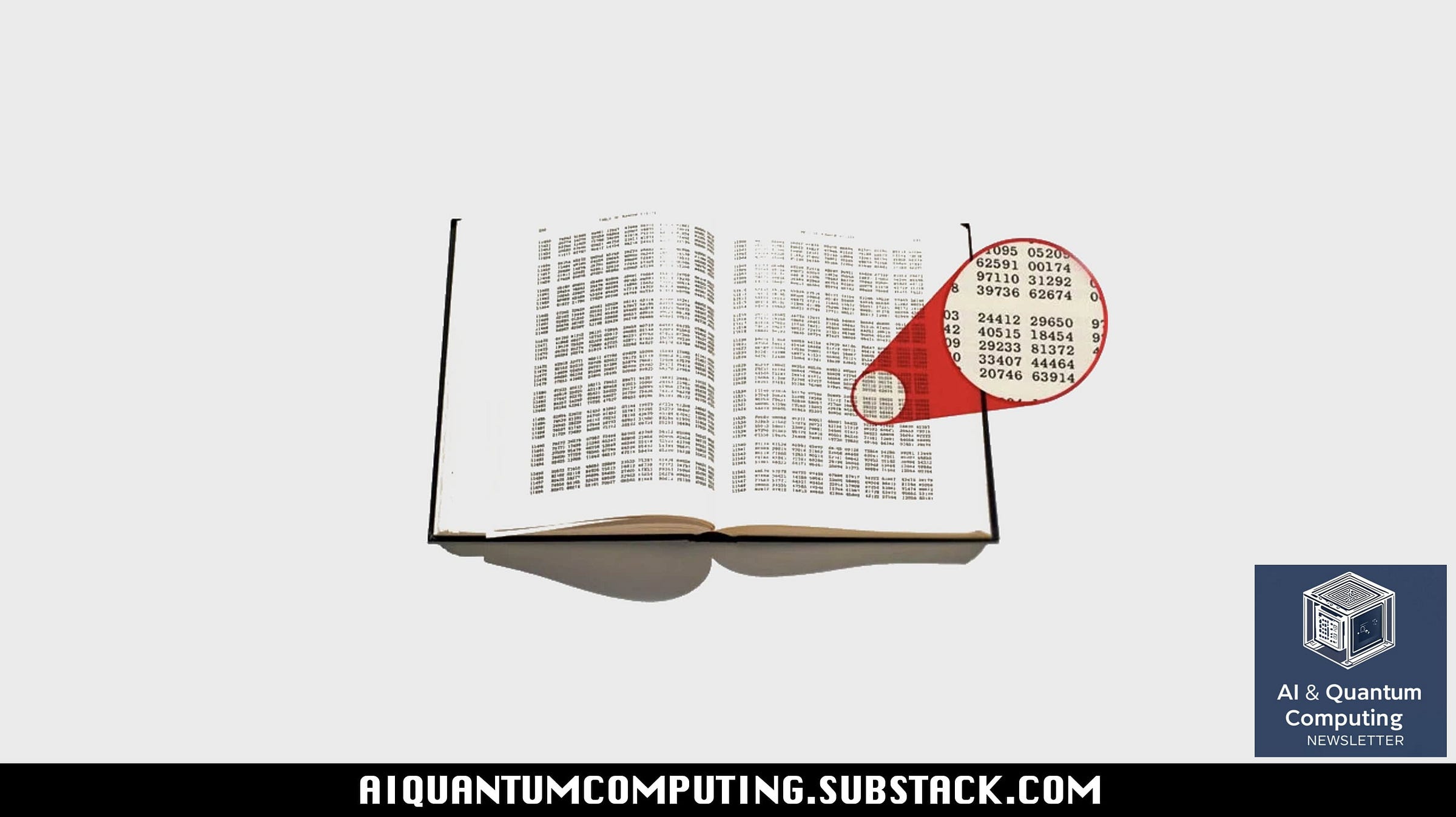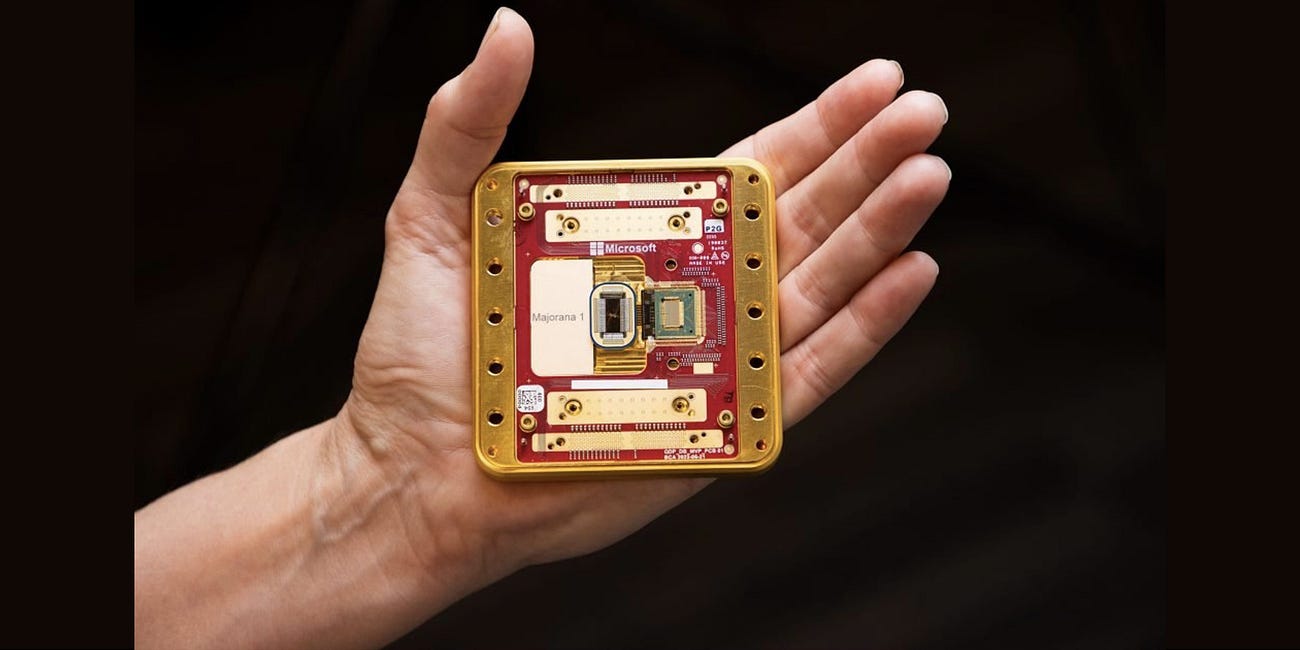A Trapped-Ion Quantum Processor Generates the First "Truly Random" Number.
A major breakthrough that could have a concrete impact on cybersecurity.
You've probably all waited for the expression “it's random” several times in your life. The phrase is frequently used to describe unpredictable situations, but true randomness, in physics as in mathematics, has long remained an elusive concept.
However, a team of quantum computing researchers has just taken a major step forward. For the first time, they have generated a number that is certified as fundamentally random. Their work, based on a 56-qubit quantum computer, has just been published in the journal Nature. What's fascinating is that this work could have an impact on very concrete areas such as cybersecurity in the future.
The very idea of “true randomness” goes far beyond the mere drawing of a number. For physicists, what we commonly describe as random often obeys deterministic physical or mathematical laws. The real challenge lies in demonstrating that a number is fundamentally unpredictable. This certification is just as difficult as generating the number itself since it is so difficult to guarantee the absolute independence of the verification mechanism.
This is precisely where the concept of “certified randomness” comes into play - a notion with far-reaching implications for both IT security and the integrity of decision-making processes. This innovative protocol was theorized by Scott Aaronson, Professor of Computer Science at the University of Texas at Austin. Together with his colleague Shi-Han Hung, he developed the theoretical basis for moving from abstract models to concrete experimentation, ushering in a new era of quantum computing.
“When I first proposed my certified randomization protocol in 2018, I had no idea how many years would pass before an experimental demonstration,” confides Aaronson in a statement. “Developing the original protocol and understanding it is a first step towards using quantum computers to generate certified random bits, exploitable in real cryptographic applications,” he adds.
A successful experimental demonstration
In a recent study, researchers from JPMorgan Chase, Quantinuum, Argonne and Oak Ridge National Laboratories, and the University of Texas at Austin - including Professor Aaronson - have experimentally realized this concept using a 56-qubit quantum computer.
The principle is based on the generation of random numbers by the quantum computer, followed by validation by a classical supercomputer to attest to their true unpredictability. This breakthrough marks a decisive turning point in the search for solutions to problems that conventional machines are incapable of solving. “Today, we are celebrating a milestone that puts quantum computing on the road to real-world applications”, commented Quantinuum CEO Dr Rajeeb Hazra in a press release.
To generate this random number, the researchers used a method known as “random circuit sampling”. Exploiting the inherently indeterministic nature of quantum systems, this technique produces a higher entropy than that achievable by conventional devices.
The team implemented this process on the Quantinuum H2 system, based on 56 trapped ion qubits, producing certified random bits. The experiment took place in two phases: firstly, the quantum computer solved complex mathematical problems in record times, beyond the reach of traditional supercomputers; secondly, the results obtained were subjected to rigorous certification via a standardized protocol run on several supercomputers.
At the end of this experiment, the researchers demonstrated that such a degree of randomness could not be reproduced by conventional systems. They mobilized a cumulative computing power of 1.1 exaflops - or over a million billion floating-point operations per second - to certify over 71,313 bits of entropy.
This breakthrough follows on from the work carried out in 2023 by Quantinuum, JPMorgan Chase, and Google, which had already demonstrated “quantum supremacy”. The challenge now was to convert this theoretical power into concrete uses - a threshold now crossed.
The researchers also point out that the H2 model, thanks to the precision of its qubits and their global connectivity, has multiplied previously achieved performance by a hundred. Such performance is not achievable with conventional architectures.
“This work marks a great advance for quantum computing: it demonstrates the solution of a real problem by a quantum computer, beyond the capabilities of current supercomputers”, analyzes Marco Pistoia, Global Head of Applied Technology Research at JPMorgan Chase. “The development of certified randomness testifies to both the maturity of quantum hardware and its future potential, in research, statistical sampling, numerical modeling and cryptography”, he concludes.
Focus on Anthropic’s MCP Protocol, Which OpenAI Is in the Process of Adopting.
Has OpenAI finally committed to the MCP protocol?
Who Will Pay the Accurate Price of Artificial Intelligence?
Is the party in the AI world about to end?
With Its Majorana 1 Quantum Chip, Microsoft Is Taking Quantum Computing a Giant Step Forward.
The whole world is currently focused on Donald Trump and his upcoming announcements. With each passing day, Donald Trump takes over the media spotlight. Whatever the field, it seems that Donald Trump wants to be the center of attention. This can be seen in the geopolitical arena, with the exchanges he has begun with Vladimir Putin over the war in Ukrain…




